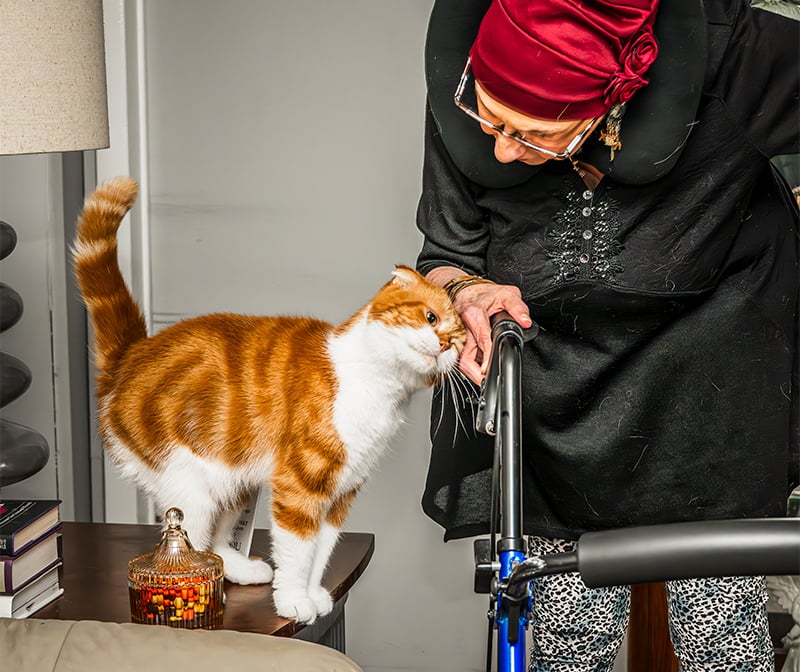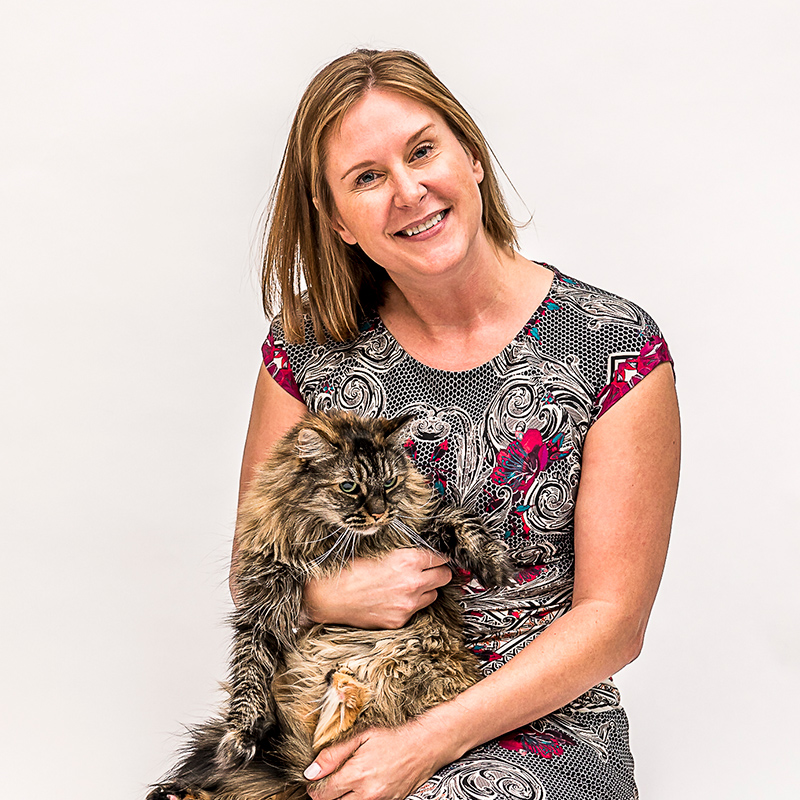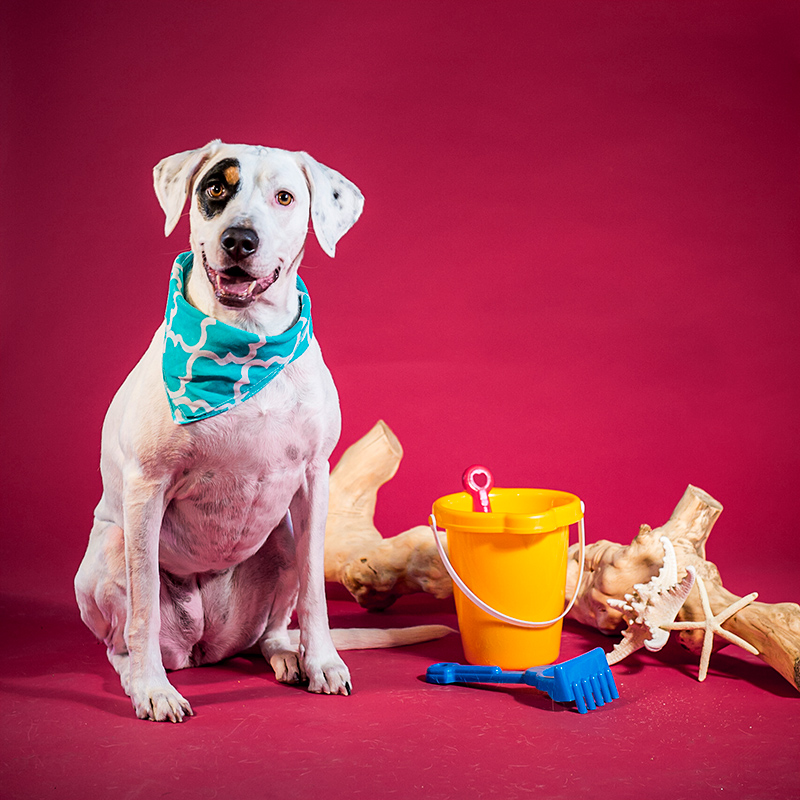Pet Guide 2022: A Better Life-Pet Rescue
An inside look at saving the homeless animals in Central Florida, one life at a time.
While the past few years have been quite the challenge for humans—the various strains of Covid-19, quarantines, masks, social distancing—it’s been just as challenging for our furry friends and the people in the business of caring for them.
During the pandemic, adoptions were up at a record rate, and some shelters found themselves empty for the first time. Now that life is returning to normal, the concern of the professional animal rescuer is that these same animals will be returned to the same shelters or, worse, abandoned.
“This pandemic brought people’s awareness to animals, and that’s beautiful,” says Jodi Chase of A Better Life-Pet Rescue. “People went and they emptied the shelters. But all along, as a rescuer, I was saying, ‘Oh crap!’ Everybody wants to do a good deed because they have time on their hands, but what’s happening is those shelters are filling back up with those same dogs and cats.”
Jodi Chase knows all about animal rescue. As the co-founder and former president, now vice president of A Better Life-Pet Rescue, she has seen a thing or two and has stories to tell.
“People need to think it through before they adopt. Now that life is getting back to normal, people are saying, ‘I don’t have the time for the dog anymore.’ Well, you make time for the dog and get a dog walker if you have long workdays. You committed to this animal, and it’s just like a kid. You don’t just give up on your kid. Can you tell I’m passionate about it?” she asks with a laugh.
A No-Judgment Zone
Despite her position, Jodi is not one to pass judgment; she’s been there and made her own mistakes along the way.
“I had a dog when I got out of college. I had to have a pug and bought him from a breeder. His name was Hamlet, the Prince of Providence, Rhode Island, and I loved him very much. But I didn’t get him neutered, and I gave him away because I came from a background that taught me that animals are here to serve a purpose. I look back on that and think, ‘God, I was so young and stupid.’ I made sure that he went to a good home, but I regret that.”
Jodi reflects on that time of her life and the important lesson she learned while she assists others in adopting a pet. “I always think of my mistake when I am working with someone younger. I make sure they understand this is a lifetime commitment. Cats can live around 20 years, and dogs can live 16 to 18 years. Are you ready for this commitment?”
Having been raised on a three-acre farm and in a family with “farm values,” meaning that animals are looked upon as providing a service, Jodi was uneasy with animals-as-accessories or animals-as-service.
“I’m pretty much a farm girl from Southern New Hampshire. I grew up living a farm-type life, and we never had domestic pets. We had pigs and sheep, and I had a rabbit that I just loved that was kept outside in a cage. I would never do that now. My father, who was also raised on a farm, bred beagles, and sold them. He loves animals, but he loves them differently. I connected with animals from an early age in a different way than my father. I just wanted to nurture and care for them, and I wanted to make a difference.”
Then came college and a career as an actress, but under the surface, Jodi had a calling to serve. It began when she found a stray dog or a cat that needed help.
“I started the rescue in 2004, basically just finding dogs and cats. Back then, we only had email to find homes. We didn’t have a website. We eventually built a website, but we had no nonprofit status at that time.”
After about a year, A Better Life-Pet Rescue was official. “In 2006, after rescuing nearly 500 animals on their own, that nonprofit status came through, and that’s when things kicked into gear.”
Cut to 2022, and A Better Life has rescued approximately 3000 dogs and cats over the years. “I don’t have an official number, but I can estimate the number from our website. That’s probably a conservative number. With the help and guidance we’ve provided, it might be upwards of 5000, but physically rescued, about 3000.”
“Don’t breed or buy while shelter pets die.”
That is Jodi’s mantra. “I know it’s cheesy,” she laughs. “But it’s what I say all the time. Don’t get me wrong, I don’t hate breeders, and I’m no breeder basher. I do hate puppy stores and think that they should be banned. We need to take the profit out of breeding. Anything for a profit with animals for me is a no-go.”
Another interesting tidbit is the difference between an animal shelter and an animal rescue.
Shelters are different from animal rescues. Some rescues have a facility, but the majority are foster-based rescues, where they rely on volunteers to foster the animal.
“Our rescue helps people who find animals. Say that you found a cat or dog, didn’t know what to do with it and didn’t want to bring it to a shelter because you know that the endgame is euthanasia.”
That’s where A Better Life-Pet Rescue comes to the, well, rescue. They foster animals in need, providing money to the foster family, so they don’t have to pay anything out-of-pocket. Then they meticulously vet prospective owners who would like to adopt the pet.
“We call their vet reference, and if they’re renting, we call their landlord and look at their lease to make sure the animal is allowed. We have to cross all the T’s and dot all the I’s, ensuring the animal isn’t placed in a home that will give them up after they’ve outgrown the cute and fluffy stage.”
The process may seem daunting, but Jodi assures us that it’s worth it. “We adopt to most people that apply, but sometimes we have to say no if someone isn’t ready. Once we get to the home visit, we rarely won’t follow through with the adoption. I’ve only done that twice in my 20 years.”
One of the most significant issues for animal rescues is not the money or finding donations but finding volunteers to foster animals in need.
“How the community can provide support is through donations. While we absolutely appreciate donations, fosters are what we need the most. Even if it’s just one kitten that will get adopted in a week, that’s an important way to volunteer. Because we don’t have a facility, fosters are critical. Sometimes people forget that we’re not a facility. We’re a group that loves animals and wants to make a difference, just like everybody else.”
Jodi likes to remind potential foster parents that A Better Life-Pet Rescue takes care of all expenses, and there is never any out-of-pocket expense when a volunteer fosters an animal.
A Better Life-Today
As mentioned earlier in the story, Jodi is A Better Life’s co-founder and current vice president. She’s recently taken a step back and is excited to have Emilie Alfonso, who also holds a position at the Sanford Zoo, take over the reins as director.
“Rescue work is an emotional rollercoaster. The ups and downs are so extreme that it can do a number on you and your soul.”
“I’m semi-retired,” says Jodi, but as a busy improv actress who works in entertainment at Walt Disney World, “semi-retired” is a relative term. Jodi is looking forward to spending more time at home with her husband, John, and their two dogs and two cats, all rescues.
“I couldn’t do it without John, honestly. I would have never lasted this long without him. The job may be daunting, and I might have finally gotten off the rollercoaster, but I will never stop. It’s the essence of who I am.”
For more information, or to volunteer at A Better Life-Pet Rescue, go to betterlifepets.com







